Role of p63 and p73 isoforms on the cell death in patients with hepatocellular carcinoma submitted to orthotopic liver transplantation
- PMID: 28350813
- PMCID: PMC5369777
- DOI: 10.1371/journal.pone.0174326
Role of p63 and p73 isoforms on the cell death in patients with hepatocellular carcinoma submitted to orthotopic liver transplantation
Abstract
Background & aims: Patients with hepatocellular carcinoma (HCC) submitted to orthotopic liver transplantation (OLT) have a variable 5-year survival rate limited mostly by tumor recurrence. The etiology, age, sex, alcohol, Child-Pugh, and the immunesuppressor have been associated with tumour recurrence. The expression of ΔNp73 is related to the reduced survival of patients with HCC. The study evaluated the expression of p63 and p73 isoforms and cell death receptors, and their relation to tumour recurrence and survival. The results were in vitro validated in HCC cell lines.
Methods: HCC sections from patients submitted to OLT were used. The in vitro study was done in differentiated hepatitis B virus (HBV)-expressing Hep3B and control HepG2 cells. The expression of cell death receptors and cFLIPS/L, caspase-8 and -3 activities, and cell proliferation were determined in control and p63 and p73 overexpressing HCC cells.
Results: The reduced tumor expression of cell death receptors and TAp63 and TAp73, and increased ΔNp63 and ΔNp73 expression were associated with tumor recurrence and reduced survival. The in vitro study demonstrated that HBV-expressing Hep3B vs HepG2 cells showed reduced expression of p63 and p73, cell death receptors and caspase activation, and increased cFLIPL/cFLIPS ratio. The overexpression of TAp63 and TAp73 exerted a more potent pro-apoptotic and anti-proliferative effects in Hep3B than HepG2-transfected cells which was related to cFLIPL upregulation.
Conclusions: The reduction of TAp63 and TAp73 isoforms, rather than alteration of ΔN isoform expression, exerted a significant functional repercussion on cell death and proliferation in HBV-expressing HepB cells.
Conflict of interest statement
Figures
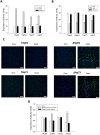
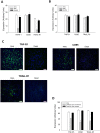
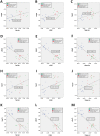
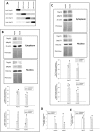

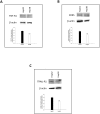
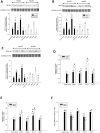
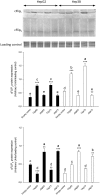
Similar articles
-
ΔNp73β is oncogenic in hepatocellular carcinoma by blocking apoptosis signaling via death receptors and mitochondria.Cell Cycle. 2010 Jul 1;9(13):2629-39. doi: 10.4161/cc.9.13.12110. Cell Cycle. 2010. PMID: 20581467
-
Hepatocellular carcinoma is associated with an increased risk of hepatitis B virus recurrence after liver transplantation.Gastroenterology. 2008 Jun;134(7):1890-9; quiz 2155. doi: 10.1053/j.gastro.2008.02.064. Epub 2008 Mar 4. Gastroenterology. 2008. PMID: 18424269 Clinical Trial.
-
Hepatitis B virus X protein promotes human hepatoma cell growth via upregulation of transcription factor AP2α and sphingosine kinase 1.Acta Pharmacol Sin. 2015 Oct;36(10):1228-36. doi: 10.1038/aps.2015.38. Epub 2015 Jun 15. Acta Pharmacol Sin. 2015. PMID: 26073327 Free PMC article.
-
The diverse oncogenic and tumour suppressor roles of p63 and p73 in cancer: a review by cancer site.Histol Histopathol. 2015 May;30(5):503-21. doi: 10.14670/HH-30.503. Epub 2014 Dec 16. Histol Histopathol. 2015. PMID: 25510918 Review.
-
Hepatitis B virus x protein in the pathogenesis of hepatitis B virus-induced hepatocellular carcinoma.J Gastroenterol Hepatol. 2011 Jan;26 Suppl 1:144-52. doi: 10.1111/j.1440-1746.2010.06546.x. J Gastroenterol Hepatol. 2011. PMID: 21199526 Review.
Cited by
-
Insights on epithelial cells at the single-cell level in hepatocellular carcinoma prognosis and response to chemotherapy.Front Pharmacol. 2023 Nov 17;14:1292831. doi: 10.3389/fphar.2023.1292831. eCollection 2023. Front Pharmacol. 2023. PMID: 38044951 Free PMC article.
-
Differential effectiveness of tyrosine kinase inhibitors in 2D/3D culture according to cell differentiation, p53 status and mitochondrial respiration in liver cancer cells.Cell Death Dis. 2020 May 7;11(5):339. doi: 10.1038/s41419-020-2558-1. Cell Death Dis. 2020. PMID: 32382022 Free PMC article.
-
Pharmacogenetics of hepatocellular carcinoma and cholangiocarcinoma.Cancer Drug Resist. 2019 Sep 19;2(3):680-709. doi: 10.20517/cdr.2019.006. eCollection 2019. Cancer Drug Resist. 2019. PMID: 35582588 Free PMC article. Review.
-
Tmub1 Suppresses Hepatocellular Carcinoma by Promoting the Ubiquitination of ΔNp63 Isoforms.Mol Ther Oncolytics. 2020 Jun 4;18:126-136. doi: 10.1016/j.omto.2020.06.005. eCollection 2020 Sep 25. Mol Ther Oncolytics. 2020. PMID: 32671188 Free PMC article.
References
-
- Siegel R, Naishadham D, Jemal A. Cancer statistics, 2013. CA: a cancer journal for clinicians. 2013;63(1):11–30. - PubMed
MeSH terms
Substances
Grants and funding
LinkOut - more resources
Full Text Sources
Other Literature Sources
Medical

